Mazda CX-50 Luggage Test: How much cargo space?

The CX-50 is the slightly bigger, appreciably more American compact SUV from Mazda, joining the more globally minded CX-5 last year. Many might wonder why Mazda needs both, especially as the CX-50 does everything the CX-5 does well and adds some uniquely worthwhile elements (style for one). I have to imagine that selling a CX-50 and CX-5 confuses people, too. Anyway …
The Mazda CX-50 has a bit more cargo space on paper than the CX-5: 31.4 cubic feet versus 30.9. That leaves both below our current luggage test hierarchy of (in order of best performance in this test and not stated volume): Hyundai Tucson, Toyota RAV4, Honda CR-V, Subaru Forester and Mitsubishi Outlander, with the Kia Sportage somewhere in there as well (long story, see below). As it turns out, the CX-50 is just a bit better than the Nissan Rogue and way better than the Ford Escape. All the preceding links go to their respective luggage tests.
OK, now that I’ve put the cart before the horse, let’s see how I came to that conclusion.
Yep, it’s a cargo area. Unlike most of the competitors mentioned above, there are no hidden tricks here. No dual-level cargo floor or sliding back seat for extra space, no split-level cargo dividers … just a cargo area.
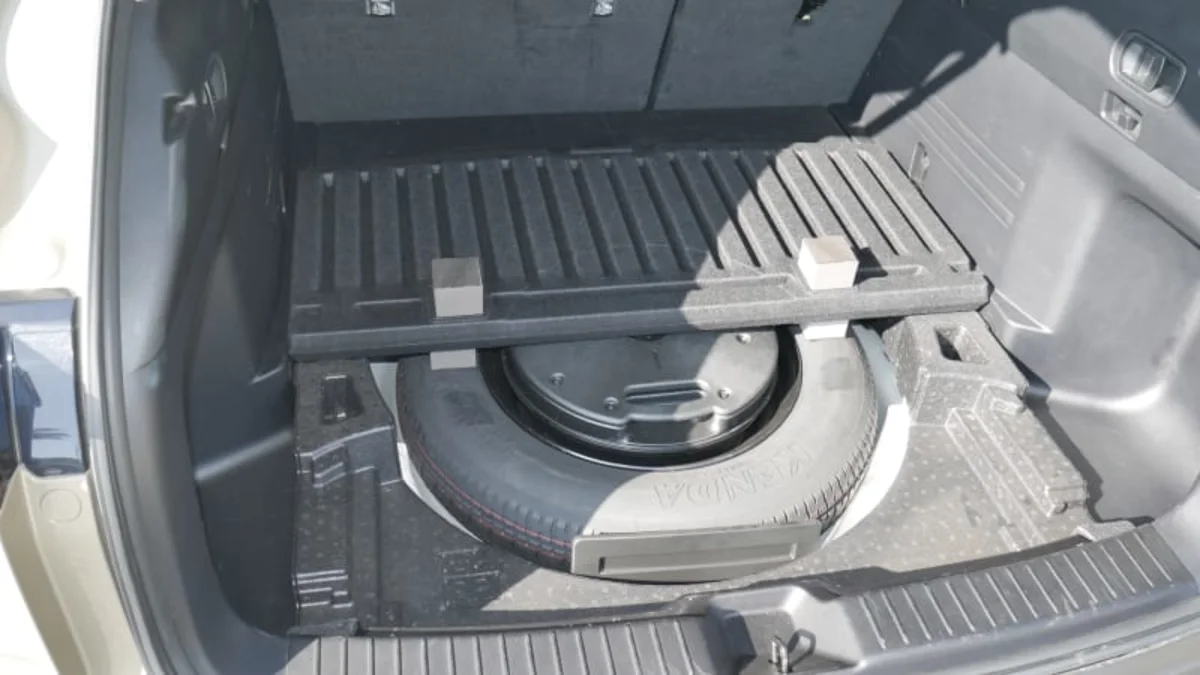
OK, so there is a spare tire, which isn’t nothing. Some competitors, specifically the CR-V and Tucson hybrids, do not have them.
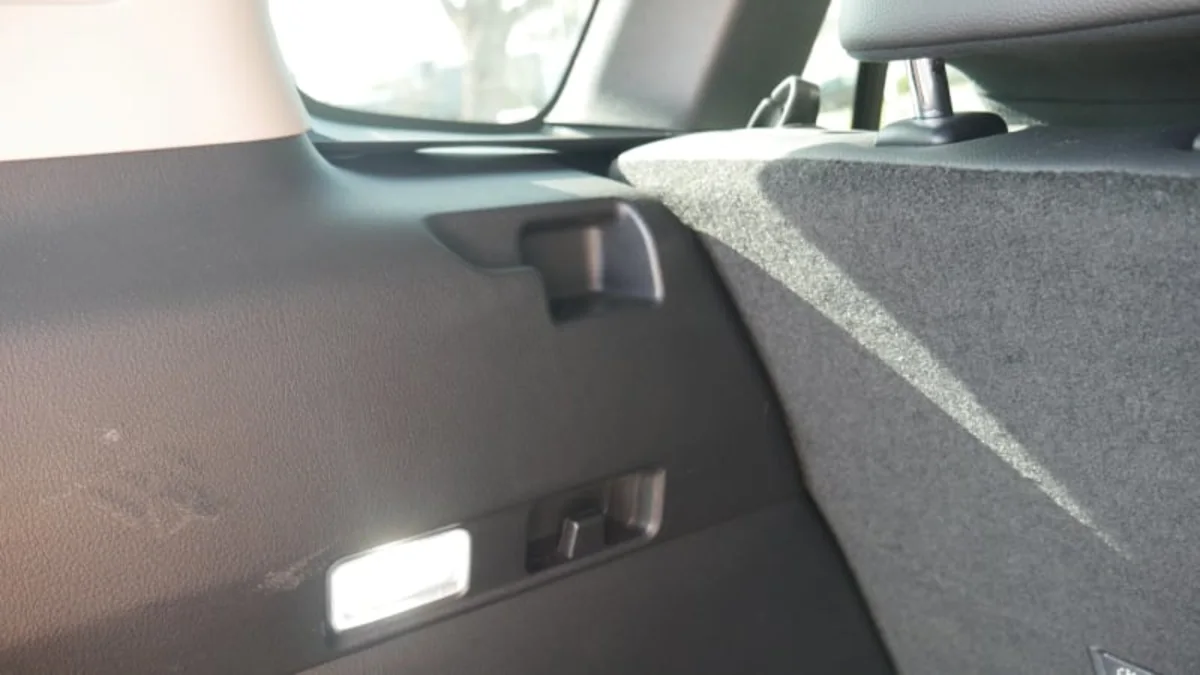
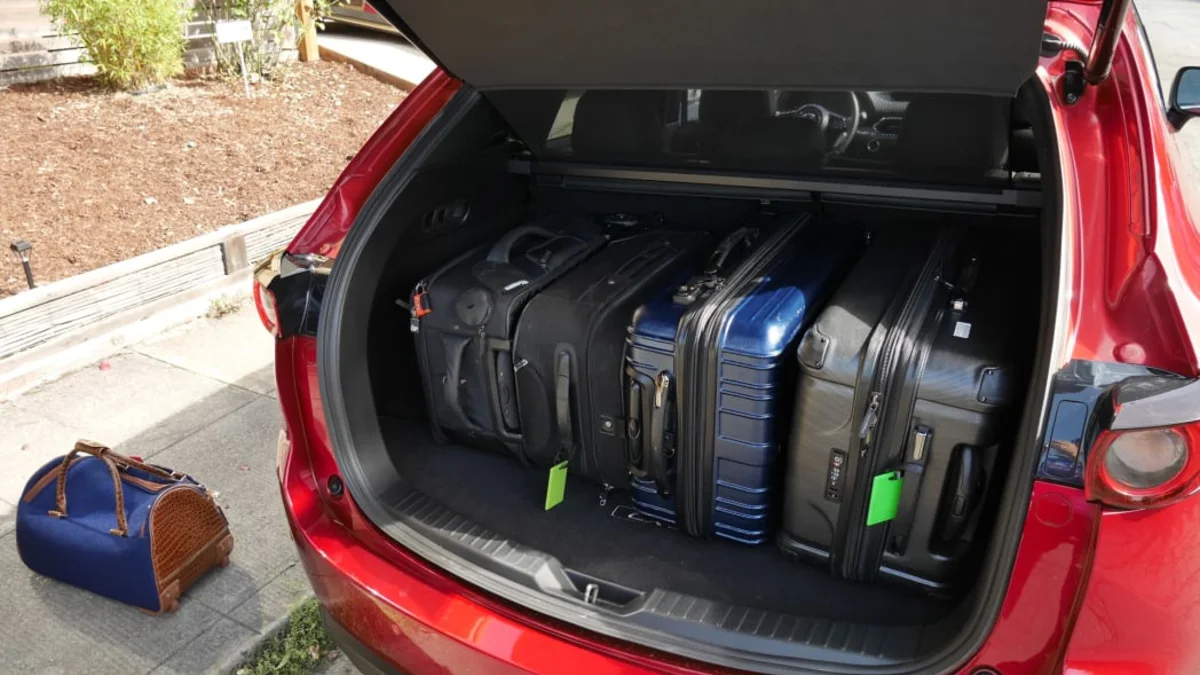
Once again, a car that I’m testing has not included a cargo cover. This prevents me from testing with and without a cover. Annoying.
I can tell, though, that the CX-50 has a more conventional cargo cover than the CX-5: It slides out from a single cartridge and attaches to mounting points adjacent to the liftgate. The CX-5 has a niftier unit attached to the liftgate that slides up and out of the way when the liftgate opens. See above right.
OK, onto the bags. As in every luggage test I do, that means two midsize roller suitcases that would need to be checked in at the airport (26 inches long, 16 wide, 11 deep), two roll-aboard suitcases that just barely fit in the overhead (24L x 15W x 10D), and one smaller roll-aboard that fits easily (23L x 15W x 10D). I also include my wife’s fancy overnight bag just to spruce things up a bit (21L x 12W x 12D).
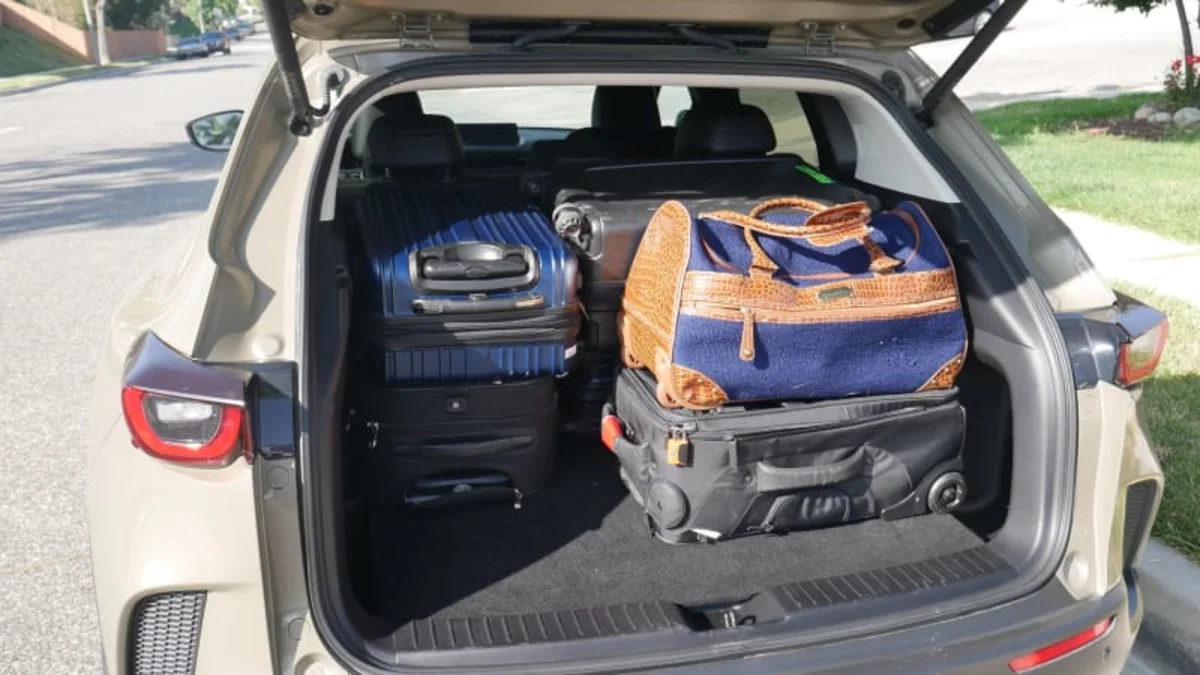
Not surprisingly, everything fit easily and there’s plenty of room left over. Below you can see how Kia Sportage and RAV4 differ, as just two examples.
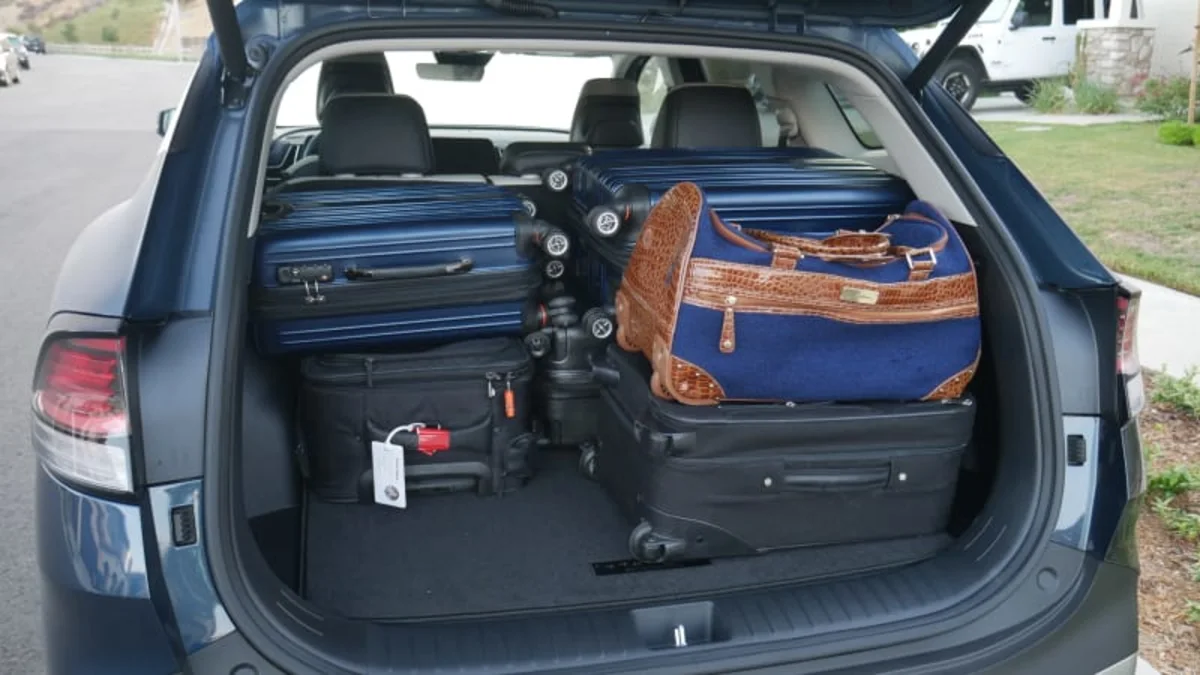
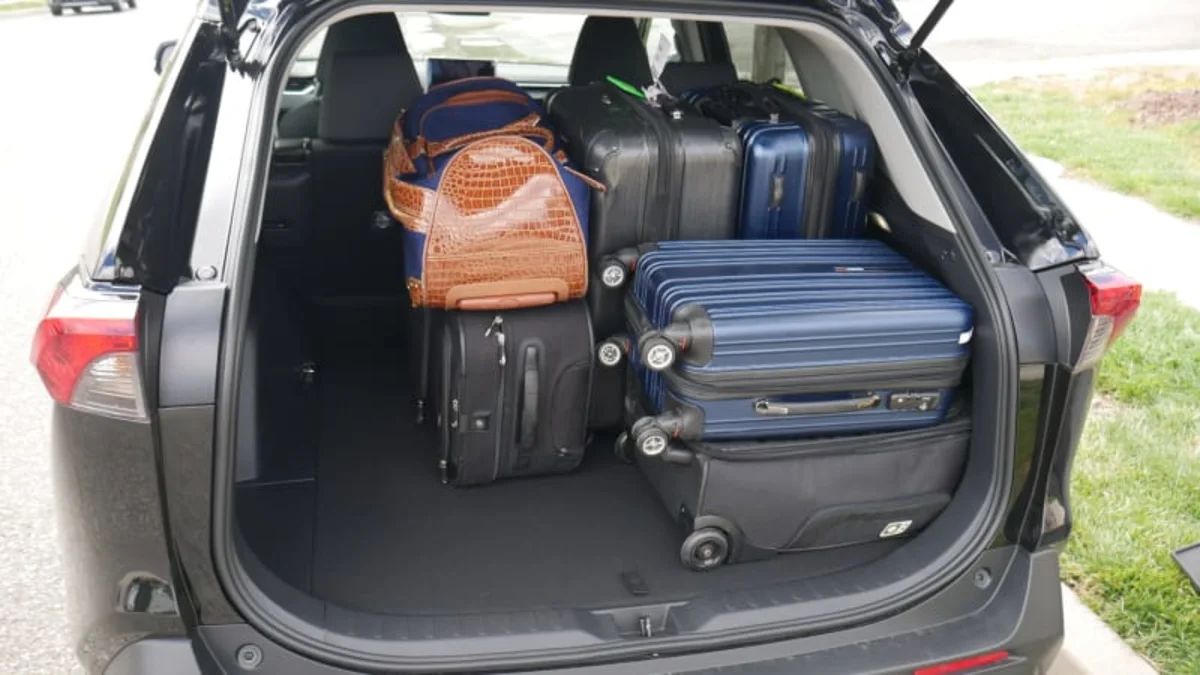
Now, let’s see how much extra stuff can fit inside. For this, I’m going to the same backup items I’ve used for all the previously listed competitors, save for the Sportage. The backup items were in storage when I did its test, therefore preventing me from definitively placing that on the leader board.
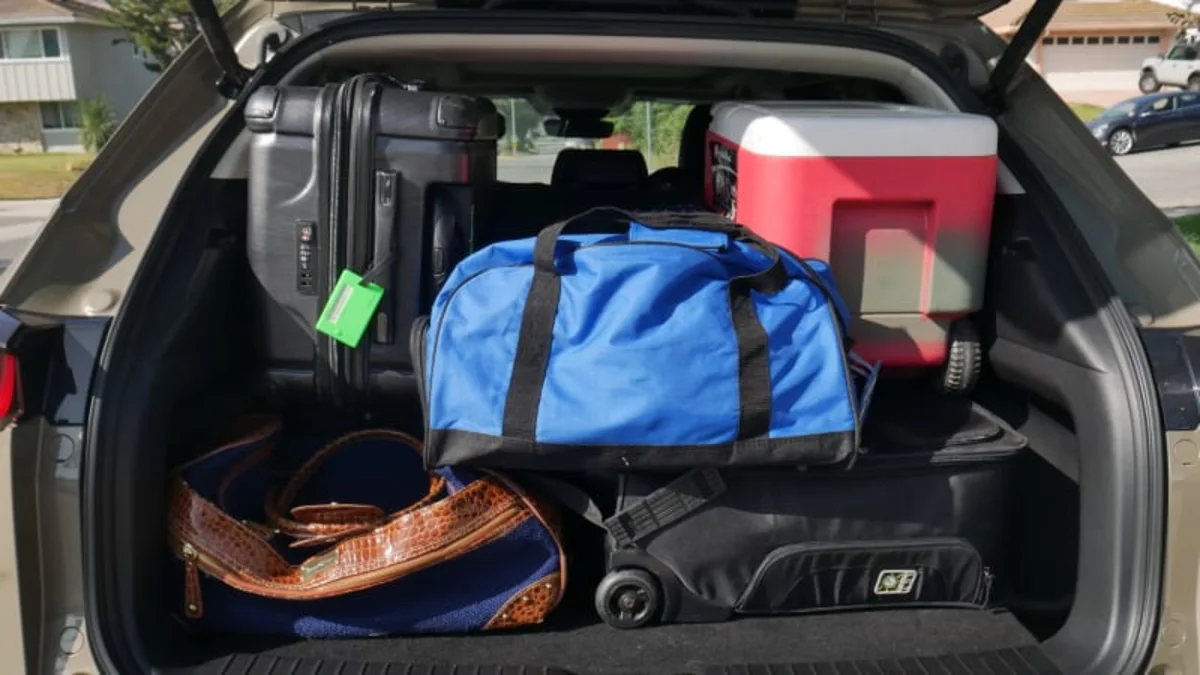
There you have it: a 38-quart Coleman cooler and that blue duffel bag also fit. That’s the case with the Tucson, RAV4, Forester and Outlander with the Sportage likely, but in fairness, a question mark. I honestly don’t know about the CX-5 since that was one of the earliest luggage tests and I hadn’t started bringing out the cooler yet.
Now, despite fitting the same items as those above competitors, there is a key difference that ultimately results in the CX-50 at the bottom of that pile. Note how high everything is to the ceiling. This performance is very close to being a no-no here at luggage test HQ, but the items in question will not fly forward in the event of a sudden stop and there’s sufficient space to see out the back window — the two reasons I don’t just stack right to the roof.
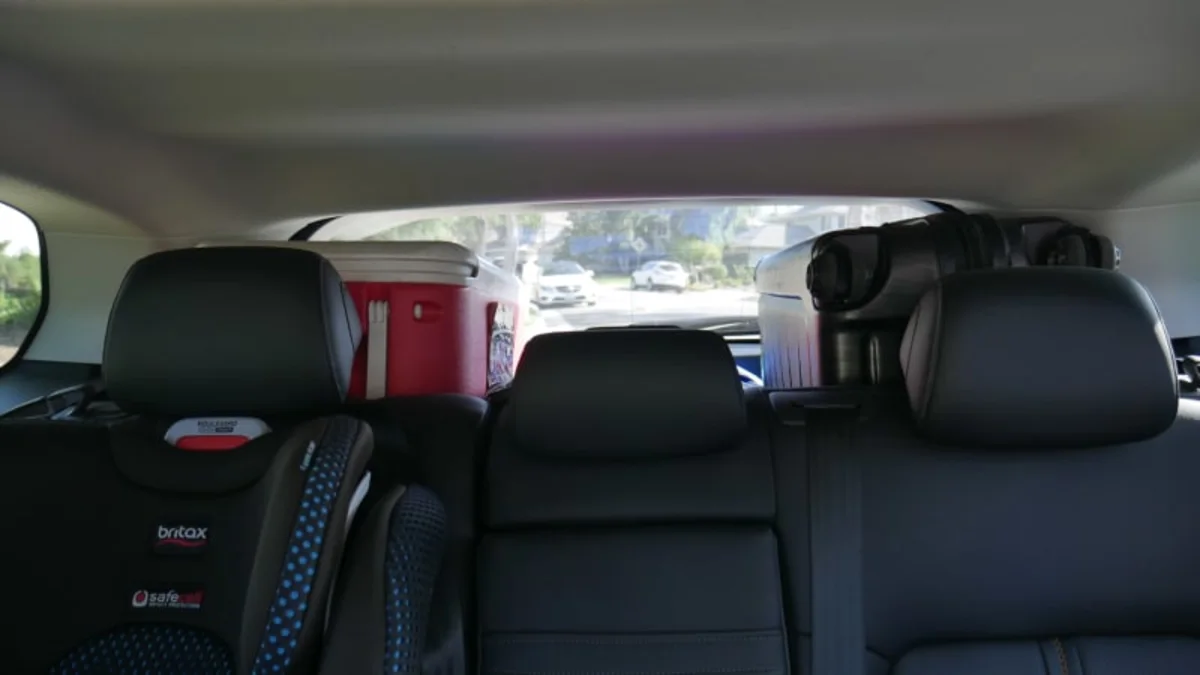
To put it simply, more visibility is maintained in those competitors and as such, they are better. Still, the CX-50 can literally hold the same stuff, while driving better and, arguably, looking better, too. Seems like a viable tradeoff to me.



